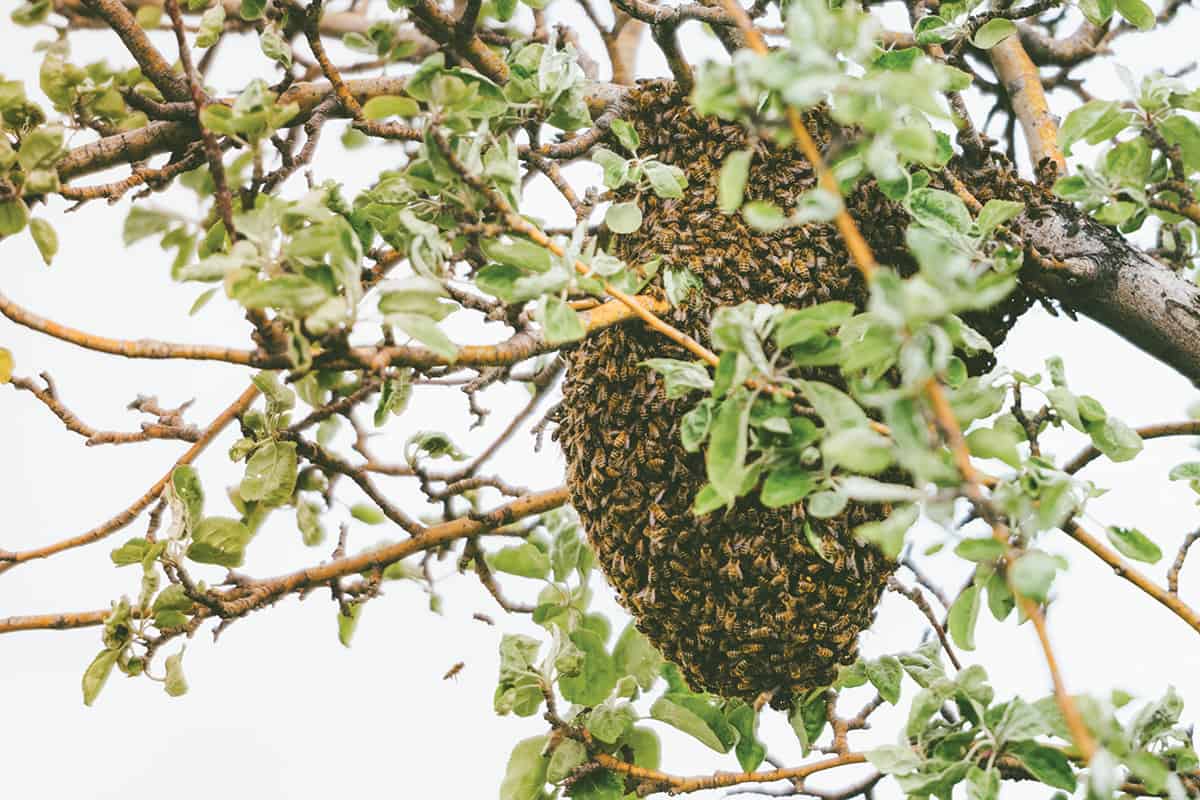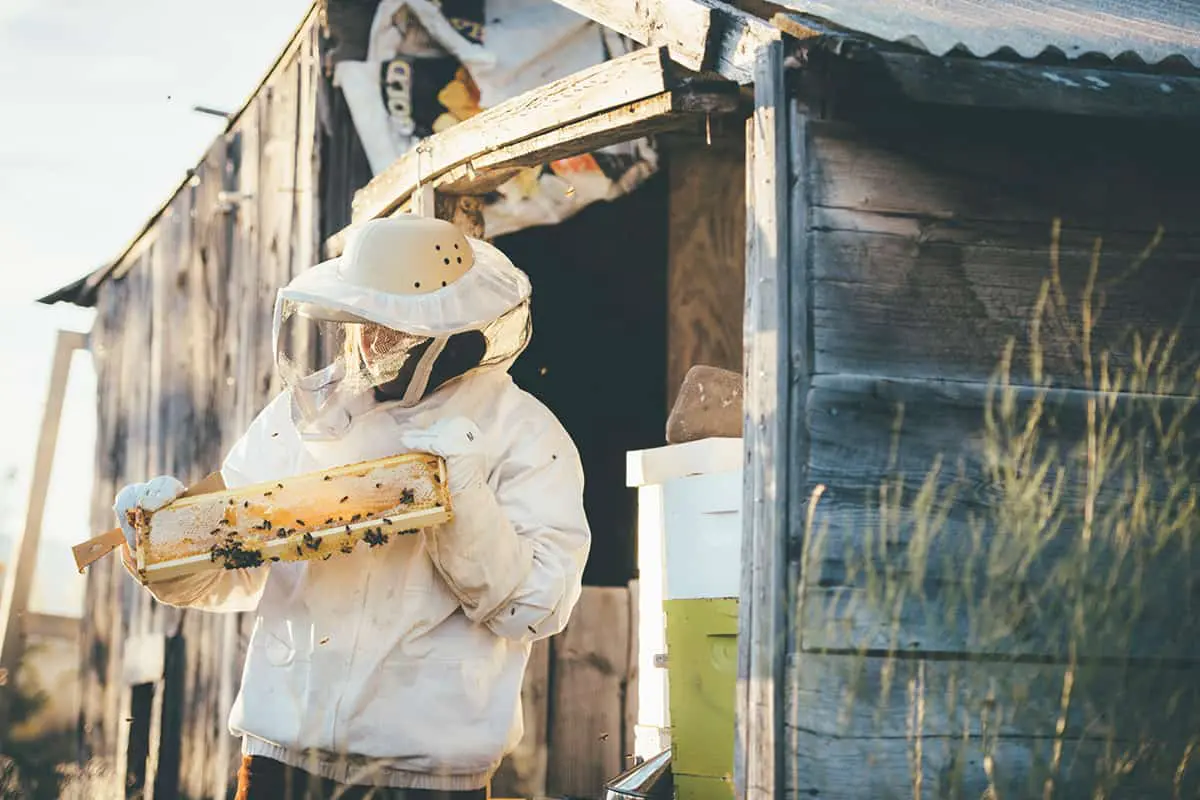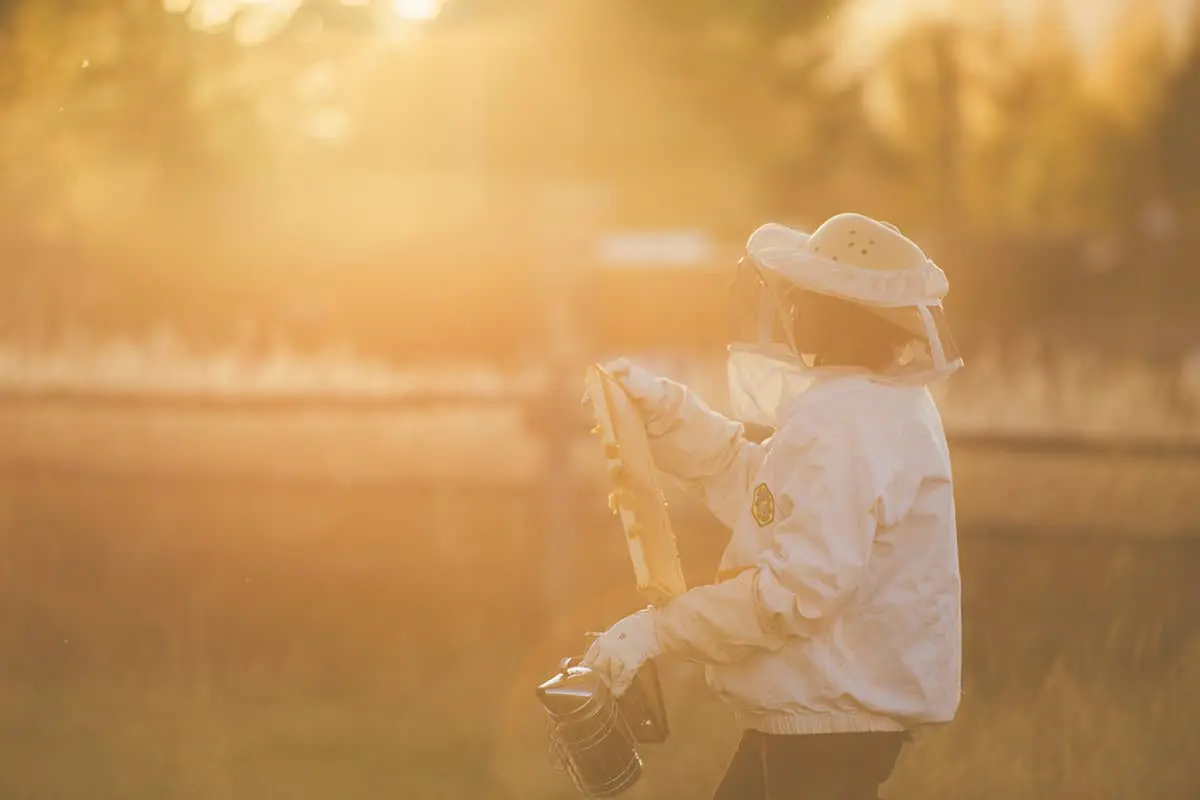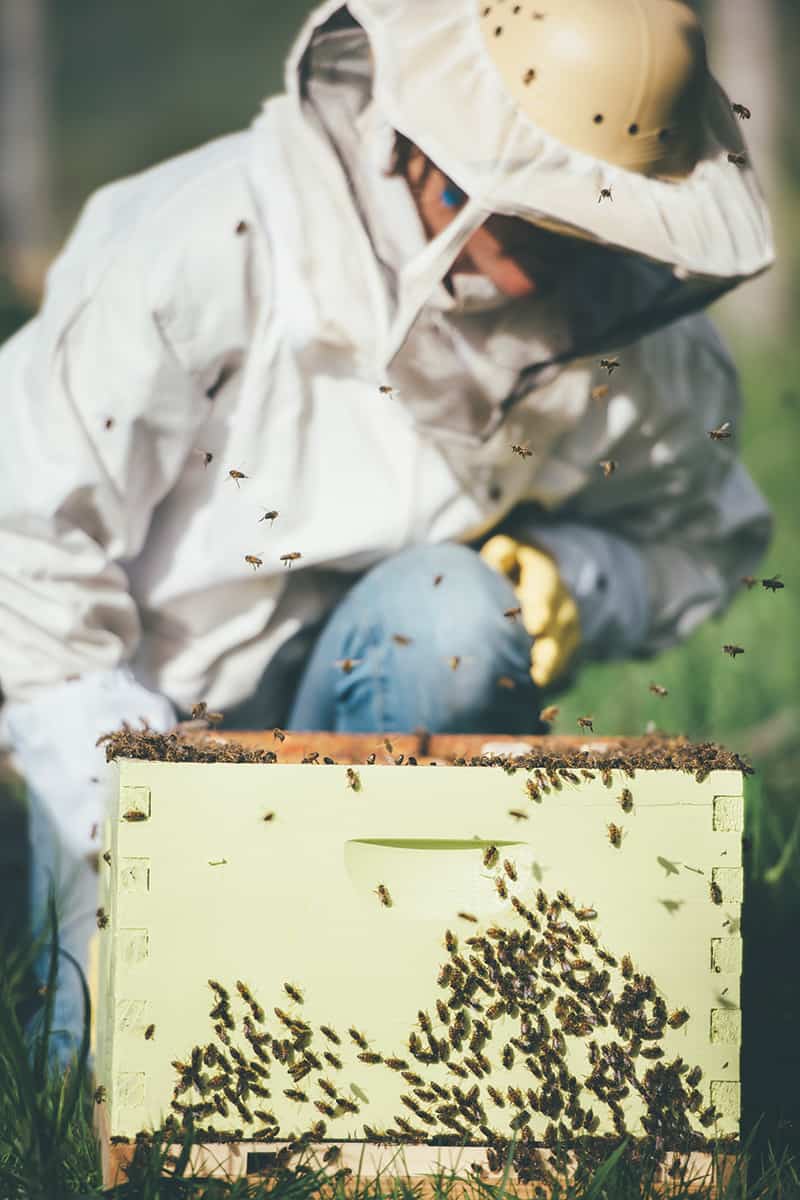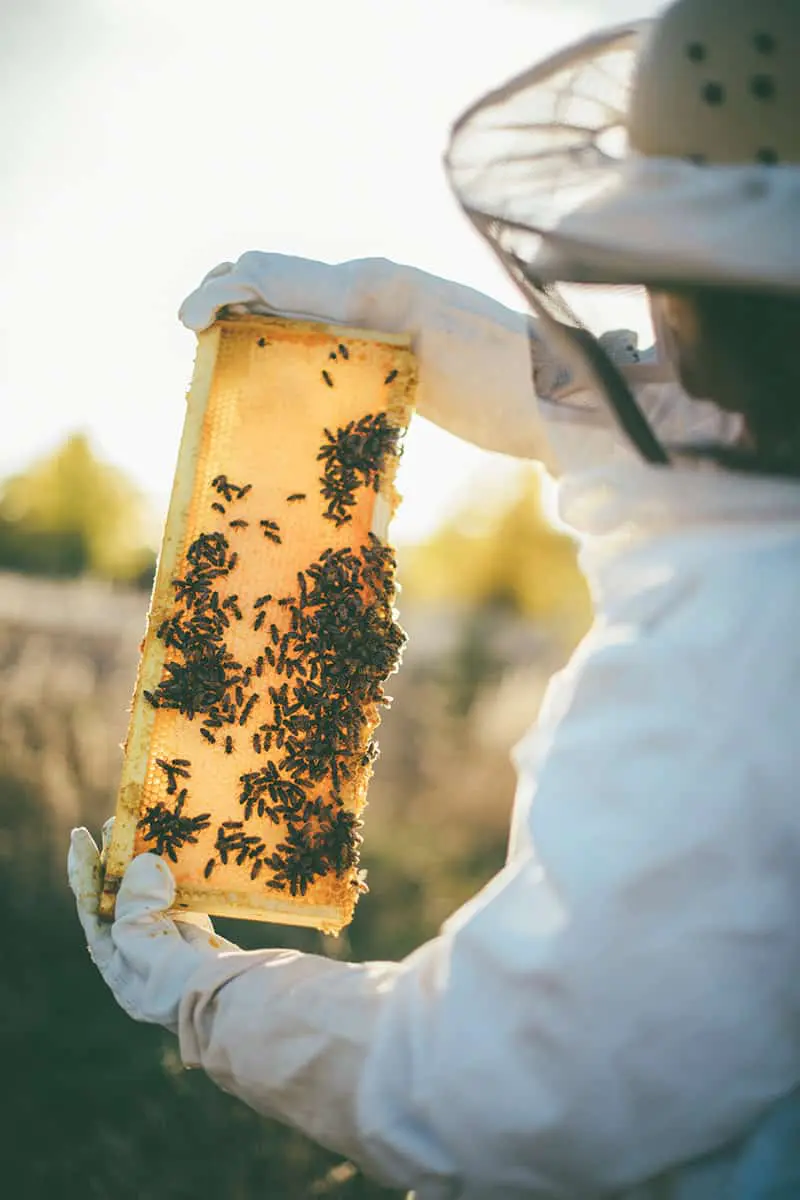By Christina Shepherd McGuire
Photographs by Camrin Dengel
–
I love honey. I love the way it slides off my spoon into my morning coffee. I love its sweet, earthy smell and the golden hue it reveals when the light hits the Mason jar just so. I love the crusty goodness that accumulates on the surface of local, raw, and unprocessed varieties—the goods that quell seasonal allergies.
I actually have this thing with bees, too, and have always dreamt of having my own hive someday. I figured it was my calling, since I’m one of those oddballs who can weed an overgrown perennial bed with bees buzzing about, landing on me, whispering in my ear—no freak-out necessary. In fact, I’ve only been stung once or twice in my life, and I bet the infliction wasn’t from a honeybee.
Honeybees have this aura. They go about their day just doing their jobs for the good of the greater whole. There are only a few goals on the minds of these creatures, I suspect: gather nectar, make honey, and feed the queen.
Such simpletons! I used to think of them as single insects—one in themselves—until I caught up with the pros who convinced me that a honeybee is actually just a small part of a bigger organism called a colony.
The Plight of the Honeybee
Life inside a beehive may seem pretty confusing to the average onlooker. And the hierarchy that exists amongst the colony sure is quirky. Of course, there’s the queen bee, central to the survival of the entire colony. All the other bees live, work, and die for the queen. But despite her governing name, the queen bee—with a brain much smaller than a worker—doesn’t rule the roost. Instead, she’s an egg-laying machine (yes, barefoot and pregnant, folks!). She also emits pheromones (or bee perfume) that only the bees in the hive can smell. This type of sophisticated communication tells the bees that all is well with the queen and definitely dictates the personality of the hive.
The female worker bees—the ones who truly wear the pants in the family—support their queen year-round. Surprisingly, their role goes well beyond just that of collecting nectar and pollen. The worker bees’ job is allocated on the basis of age. On days one and two, the workers clean cells and keep the brood (egg, larva, and pupa) warm. On days three through five, workers feed the older larvae, followed by days six and seven when they feed the younger larvae. Days twelve through seventeen are devoted to producing wax, building cells, and carrying food. During days eighteen to twenty-one, they guard the hive. And finally, after day twenty-two, the workers then fly from the hive, pollinating plants and collecting pollen, nectar, and water.
And the drone bees—well, sorry, guys—they only have one duty: mate with the queen before they die. In early autumn, the drones are evicted from the hive by the pants-wearing worker bees. The end.
Now this simplistic rendition of what goes on in the hive only unveils one part of the bigger picture. Aside from supporting their egg-laying queen, honeybees have the broad responsibility of pollinating agricultural and wild plants. As they gather nectar and pollen, they also deposit male plant pollen into the stigma of the female plants, stimulating the growth of seed and fruit. Certain crops—namely blueberries, cherries, and almonds—depend almost solely on honeybee pollination, making the business of bees a hot commodity in the agricultural space.
But sometimes being a creature essential to nature has its disadvantages. Honeybees-for-hire are shipped seasonally—from places like Wyoming and Idaho—to California and back to pollinate agricultural crops. (This is big business, people!) And this $14 billion industry remains one of the key factors in the proliferation of colony collapse disorder, a worldwide epidemic. Local beekeeper and Teton Valley, Idaho, resident Rob Dupre explains the specifics: “Bees are trucked around the country on semis—which is very stressful for the bees—then arrive at a huge monoculture area [like an almond grove] and get fed chemically medicated corn syrup until the almond trees start blooming. Mites and diseases are spread amongst the bees, and then the bees are dispersed back out around the country again, including into this valley.” Dupre mentions that one of the main detriments to bee populations is the Varroa mite, an Asian mite that first appeared in the States around 1985. This mite shows up not only on the commercial colonies that summer in our high mountain area, but can also afflict backyard populations, too.
Artisanal Keepers and Natural Methods
Big business aside, local honeybee keepers are popping up like weeds—and it’s not just happening here. With a greater awareness of the honeybee’s quandary, everyday citizens are educating themselves and delving into the practice of raising bees. True, some were drawn to this artisanal craft so they could enjoy the foodie staple of raw honey, known for its anti-inflammatory properties, among other benefits. Others have a more holistic plan that includes their backyard vegetable or fruit gardens. But whatever the motive, backyard keepers have learned to prize their bees not only for their honey, but also for their place in our ecosystem.
It’s funny—nearly every beekeeper I spoke with claimed novice status, even if they’ve been cultivating bees for years. “I’m no expert … ,” “You probably shouldn’t be talking to me … ,” and, “I’m really just learning,” were all phrases spoken before I finally coerced them into an interview. You see, bees—with their specific roles and calculated idiosyncrasies—seem to humble the backyard keeper, keeping them on their toes every year.
First, there is the natural process of swarming, when a portion of the colony’s workers create a new queen and leave the hive, forming a swarm. Emily Sustick, program director for Full Circle Education and a backyard beekeeper, explains, “Swarming is a natural process of reproduction that happens in the late spring or early summer after the colony has built back its population and the queen is no longer able to find cell space to lay a new brood. Swarming allows for diversification of the gene pool, increasing the overall health and resilience of the colony.” To prevent a potential swarm, keepers may add another box to their hive or add more frames around the brood box so that the queen can expand her egg-laying space. But if you’re not totally on top of it—BAM—you’ve got a swarm! Last spring, Sustick recaptured a swarm on a tree in her yard (one of those educating experiences), making two hives out of her one. Unfortunately, the new colony didn’t make it through the winter.
Denise DelSignore, of Felt, Idaho, just leaves her bees alone. She explains that she goes into her five hives only once yearly and never smokes them (a process used for inspection that calms bees in the hive). DelSignore started keeping bees as a family tradition that dates back to her grandfather. She keeps two types of hives: a Warre hive, which is a top-bar hive that closely mimics nature, allowing the bees to draw out their own comb from the top down; and the more popular Langstroth hive, which consists of boxes (or supers) stacked on top of each other with frame foundations for bees to make their comb and store their honey. DelSignore harvests honey only in the spring, after the bees have had enough to overwinter. And she does so sparingly, assuring little disruption of the unit. Sustick concurs, noting that when you first establish a hive, you need to forgo harvesting honey for at least one full year to ensure they will make it through the winter.
Beekeeping in a climate with a short summer season definitely has its challenges. Aside from ensuring the bees have enough honey to survive the winter (roughly seventy pounds), you also need to provide nutrients during the sparse spring months. DelSignore makes bee patties out of store-bought pollen, soy lecithin, and either lemongrass or wintergreen essential oils. The patties give her bees a pollen source prior to first blooms, while the oils help fight disease. Similarly, Sustick makes a spring tea for her bees to help with immunity. In the past, she has also dusted her bees with powdered sugar to prevent mites from attaching to their bodies. And Dupre uses a screen on the bottom board of his hives. When the bees pick mites off each other, they fall out of the hive and onto the ground, preventing infestation.
Despite these best efforts, even the most versed keeper eventually loses a colony. Dupre has captured a few of his past swarms, but none of them have prospered. Sustick lost one colony this winter, and DelSignore—despite her hands-off approach—has had a few colonies perish throughout her years. “Discovering one of my hives deceased initially felt like a huge loss,” explains Sustick, “but working with a threatened species [especially in a cold climate], I regard this as part of the learning experience, and it will not deter my efforts.”
Luckily, our local keepers have a shoulder to lean on and encouraging friends to share tactics with. The Teton Valley Beekeeper’s Association, organized by Dupre, keeps members informed of regional bee-related events and information. Through this organization, he coordinates bee orders and pickups. The first meeting, held last spring, had six attendees. Dupre hopes to have seasonal meetings where keepers can coordinate equipment and bee orders, as well as honey-extracting efforts. In the future, he hopes to organize a beekeeping class and/or coordinate a guest speaker. Any beekeeper is welcome to join.
Life-Long Lesson
When asked if the rise of backyard keeping helps populations thrive, my responses were varied, but one theme rang true: education. Being a beekeeper and learning directly from the bees creates a bigger-picture awareness, one that segues into everyday life. “What I have learned is that I’m a more bee-centric beekeeper. I am concerned about the health and proliferation of the species,” Sustick explains.
Sustick spreads the love through her teachings with Full Circle Education. “Children are fascinated by these social insects and are intrigued when they discover that much of the food they consume daily is dependent upon pollinators.” She further connects them to this species through practical arts, such as instilling the tradition of making (dipping) beeswax candles during the winter solstice with the Teton Valley Community School, Alta Elementary School, and homeschooled children.
And for adults, with honeybee-rearing gaining popularity, questions surrounding bees are asked and answered. This awareness ultimately fosters a bigger, more mindful movement. “Since the honeybee maintains a symbiotic relationship with much of the natural world, their decline in health is a reflection of a greater imbalance and disruption to our ecosystems,” Sustick explains. “Ultimately, my goal is to help people make this connection and take action in their own lives to protect and support the proliferation of this incredible species.”
By simply observing a colony in action, maybe we’ll take more time to engage and notice the bees in our own garden. Maybe we’ll start planting bee-centric scapes, and maybe we’ll skip fertilizing our lawns this spring. And maybe, just maybe, by spreading this awareness we’ll start to bring more balance into our natural world. Start a thread on your local gardening platform. Ask a question of your seasonal landscaper. Spread the bee-centric word. Go ahead, I dare you.
Bee-Centric Practices:
—
1. Plant native bee-friendly plants in your garden and cultivate native plants, too.
2. Buy from a nursery that sources plants free of harmful pesticides.
3. Replace part of your lawn with flowering plants.
4. Leave the dandelions and clover alone.
5. Report swarms to a local beekeeping group (like the Teton Valley Beekeeper’s Association) instead of calling an exterminator. Swarms tend to be docile because they have no home or honey to protect.
6. Support local organic farmers and CSAs, especially those using regenerative farming practices.
7. Plant cover crops in your vegetable garden once it’s passed, and/or wherever there is bare soil. This helps reduce weeds and provide a food source for bees. Examples include crimson clover and buckwheat.
8. Steer clear of using chemical herbicides, pesticides, and fertilizers in your garden and on your lawn. Many are toxic to bees.
9. Most importantly—get to know the bee!
Bee sources:
–
Join Full Circle Education to learn more about bees and pollinators through a workshop coming this summer. Tour hives and gardens, taste local honey, and more. For more info, visit tetonfullcircle.org.
Teton Valley Beekeeper’s Association contact: chasingparadise1@gmail.com


